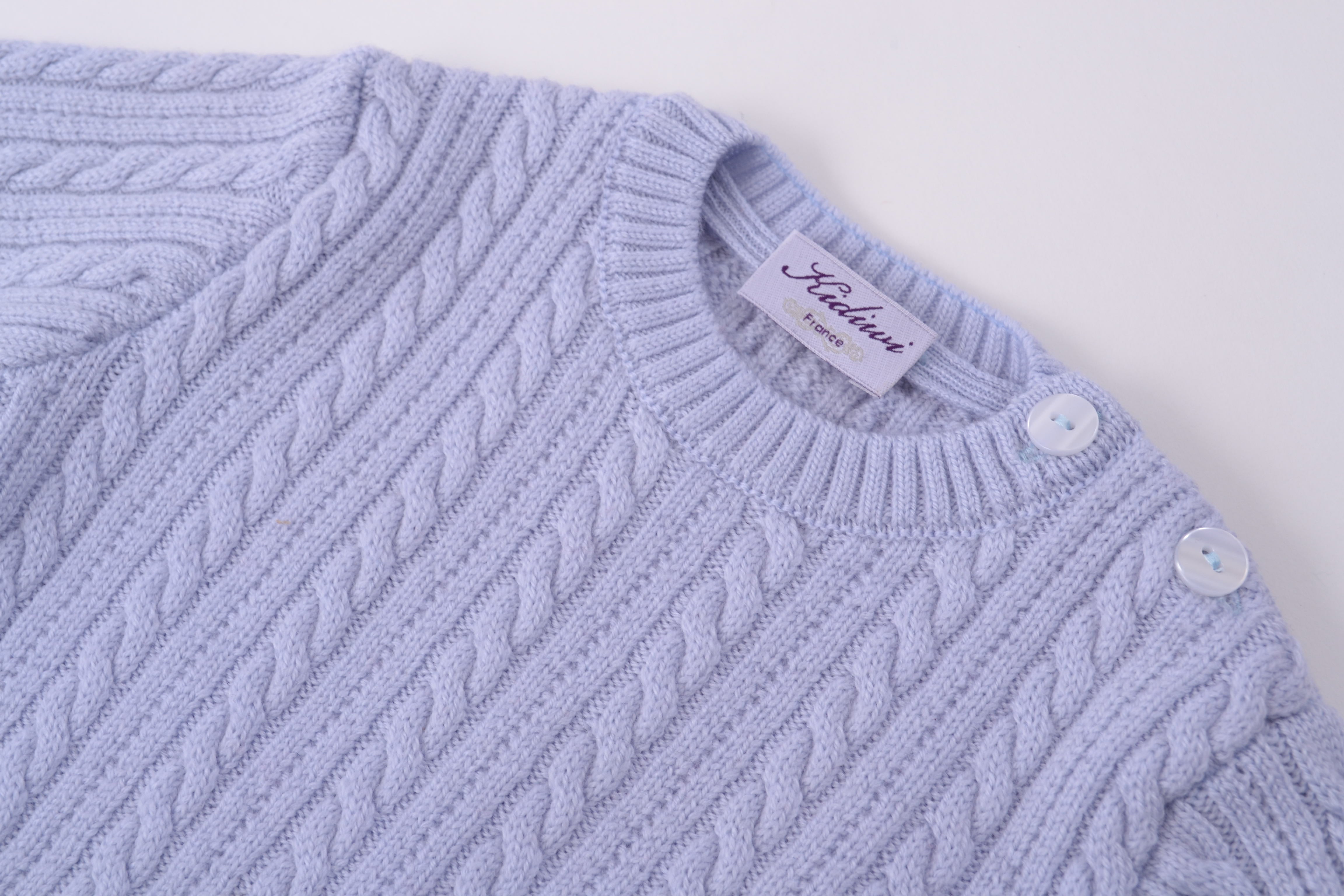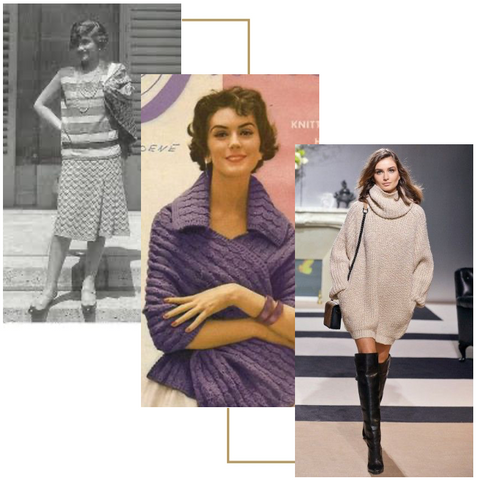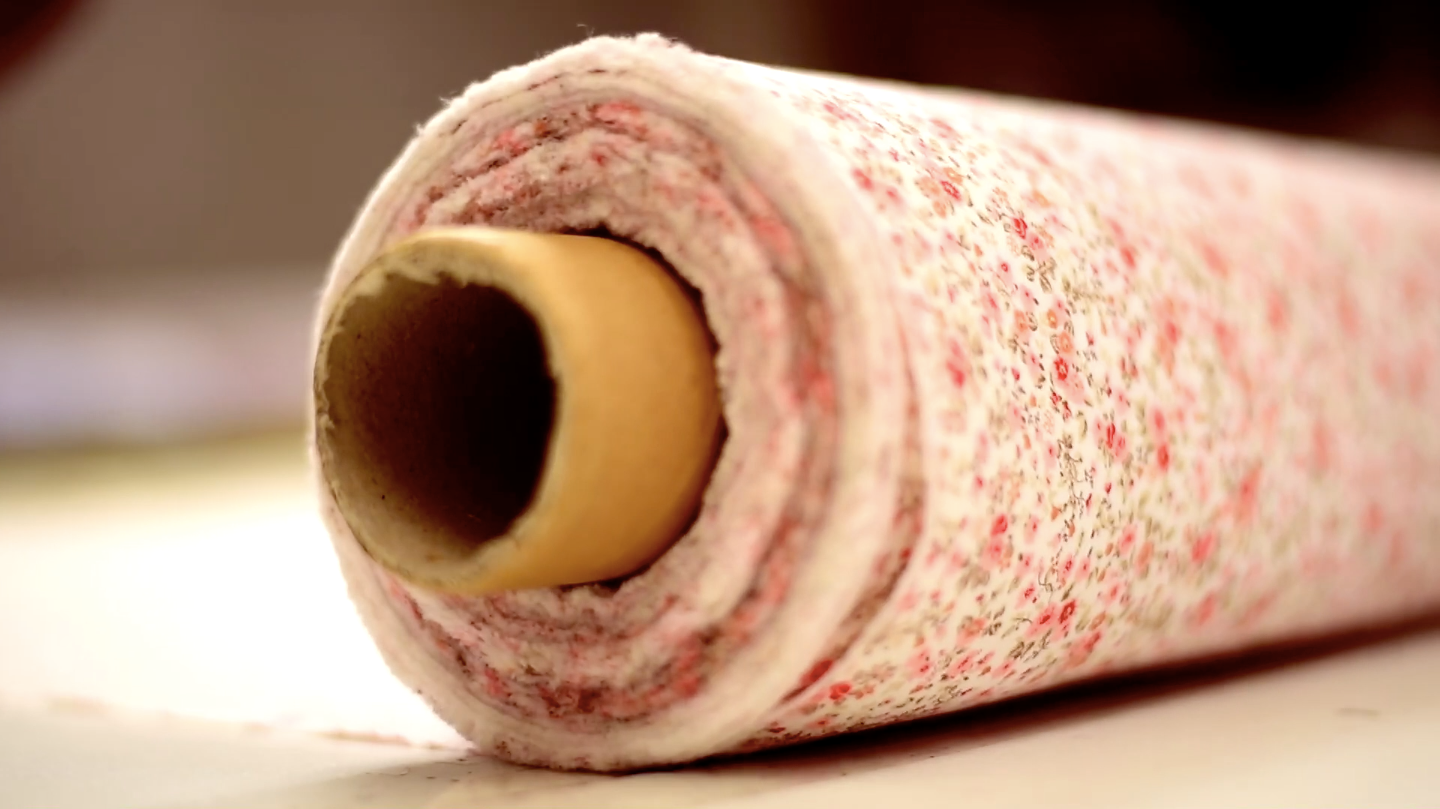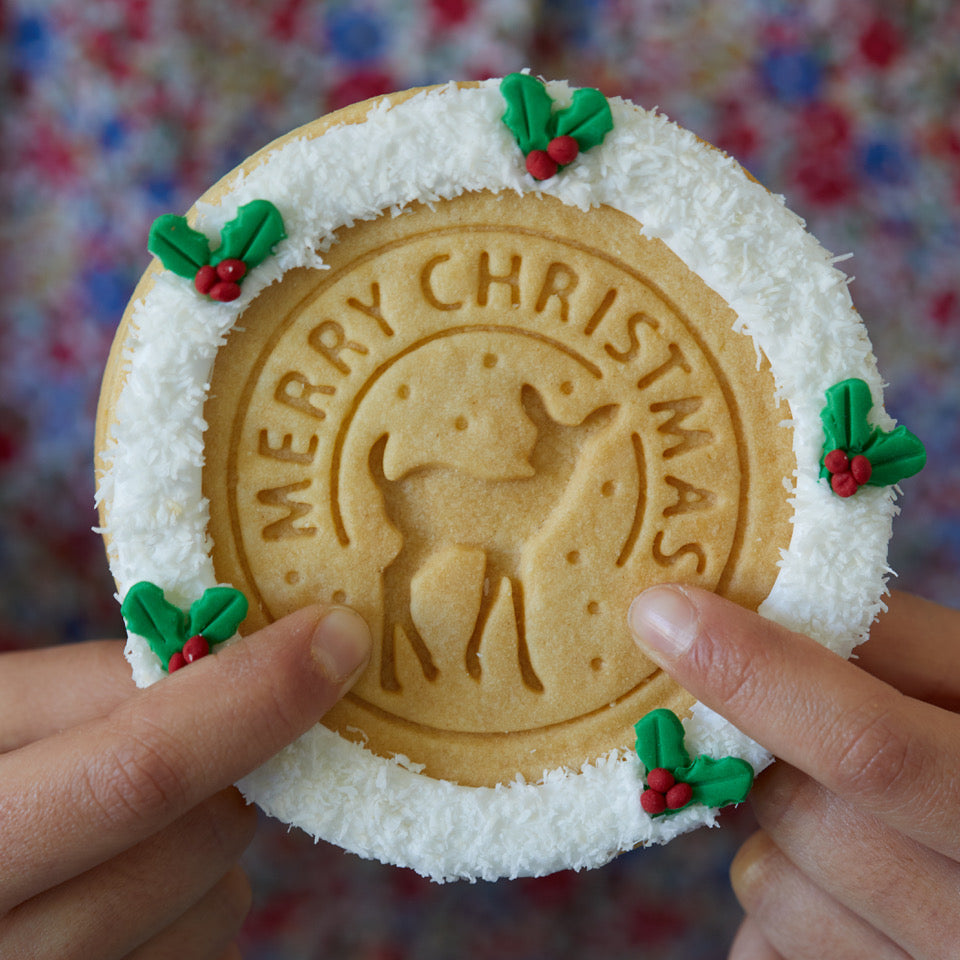
Focus on knitwear
Knitwear is back! We all have it in our wardrobes, whether sweaters, scarves, hats or gloves, they serve us by keeping us warm every winter. Often associated with itchy sweaters made by our grandmothers, knitwear has become an essential fashion item and is now present in all magazines and on the haute couture catwalks. But where does this ancient technique of knitting come from?
Its ancestor is a technique used by the Vikings called nålbinding, which consists of making a spiral fabric with a more or less strong elasticity depending on the material used. But the exact origin of knitting is a subject on which not everyone agrees. Historians themselves wonder about what should be called "knitting" or not. For some, a knitted fabric is considered a knit when it is made from the same yarn rolled up in loops, called stitches, with the help of several needles, resulting in a stretchy fabric. The first traces of knitted garments would therefore have been found in Egypt between the 11th and 13th centuries.
The technique then was passed through Islamic countries during the Arab conquests, and finally spread throughout Europe due to the great crusades of the 10th century. Over the centuries, knitting became a craft and commercial activity in its own, and each culture aquired the technique to adapt the stitches according to local needs. In the Celtic cultural regions, such as Finland, Norway and Iceland, the use of crochet knitting in thick wool is preferred. In France, the bonnet industry was particularly flourishing in the 18th century. During this same period, knitting grew in importance as it became the hobby of noble women such as Marie-Antoinette. The art of knitting later spread to all social classes, from the bourgeoisie to the lowest class.
With the invention of the modern knitting machine in 1864 by William Cotton, the art of hand knitting lost its popularity and became less relevant. After the arrival of the textile industry in the 1920s, the decline of knitting continued, especially as wool became scarce and expensive. After the war, women recycled the wool from their old clothes to make new ones. But in the early 2000s there was a resurgence of knitting which coincided with the growth of the Internet which sparked interest in handwork and the "Do it yourself" movement. Sweaters, scarves, hats, dresses... knitting is having a comeback on the fashion scene! Far from being old-fashioned, knitting is being brought back into fashion with new materials, as it is now possible to knit with lily-of-the-valley wool (with glitter), fur wool, soya or bamboo.

Knitting therefore has a rich history and continues to evolve over time. Each new discovery and each new technology enriches it and leads to the creation of stitches that vary according to the times and cultures. Today, knitwear remains timeless and gives way to new trends every year. Styles evolve but the initial technique remains the same, allowing the creation of soft and warm pieces in all shapes and forms!
This has hopefully sparked your interest in the art of knitting; so how about creating beautiful pieces for you and your loved ones on your own? There is probably nothing more satisfying than making and wearing your own creations! It is also the opportunity to please your family, your children or your friends by making them personalized gifts with all your heart. You have never handled needles before and don't feel up to it? Don't panic! The simple mastery of the basic stitches already allows you to make beautiful pieces. We will explain how to start gently by applying the garter stitch and the jersey stitch, respectively also called top and bottom stitches...
- Garter stitch
The garter stitch is the essential starting stitch. It is obtained by knitting each stitch of each row right-side up. As you can see on our Frédérique baby set, the garter stitch is a repetitive stitch that gives a dense and thick look, and offers a rather loose structure that extends equally in both directions. The softness of its small regular waves are particularly appreciated for making accessories, scarves or blankets. It is obtained by the following way:


1. Stitch the right needle into the first stitch of the left needle.
2. Thread the thread around the right hand needle.
3. Bring the needle back to the right
4. Drop the stitch from the left needle to the right needle.
- Jersey point
The jersey stitch is very similar to the garter stitch with only one difference: it is knitted in alternating stitches. As you can see on the details of our Simon sweater, on the front side of the stitch you get a "V" shaped visual, on the other hand on the reverse side of the stitch, the reverse side has exactly the same ripples as the foam stitch. This stitch allows the creation of several patterns to knit beautiful jumpers, hats or scarves. To apply this technique, just follow these steps:

1. Pass the right needle under the thread and then stitch from right to left. The right needle is on the left needle.
2. Wrap the thread over and under the right needle.
3. Pass the tip of the right needle under the left needle.
4. Drop the stitch from the left needle
We hope you are motivated and full of creativity! Don’t worry we assure it's very easy! Just arm yourself with your two needles, your ball of wool, a little patience, a lot of love, and the result will be fantastic! And what wouldn't we do to keep our little protégés warm this winter?




Leave a comment
This site is protected by hCaptcha and the hCaptcha Privacy Policy and Terms of Service apply.